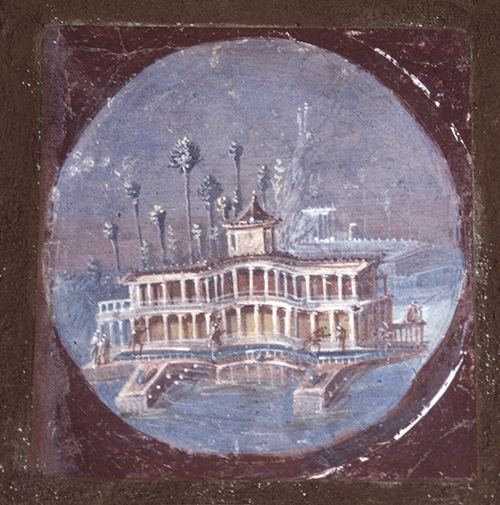
Luxury, corruption and moral outrage
In his book The Ara Pacis : Augustae and the Imagery of Abundance in Later Greek and Early Roman Imperial Art, Castriota questions the justification for xenophobically attributing the collapse of the Republic to the importation of foreign luxuries. “It is true that the Late Republic was a period of violent upheaval and corruption which to some extent involved a loss of cultural identity in the face of advancing Hellenism. But this was primarily a failure in the Roman constitution, a gradually developing crisis in which an oligarchic state structure could not accommodate itself to the position of imperial authority that the Romans had already acquired by the second and earlier first centuries B.C. It was not an immediate result of some collapse in morals attendant upon an exposure to Greek refinement or luxury.” (Castriota 1995:146). In other words the actions of individuals, wealthy or otherwise, may have been taken as symptomatic of a general malaise, but the real problem lay at the centre of government. Cicero, the staunchest of republicans, endorses this view, when he finally accepts the inevitable need for a single quasi-omnipotent figure who can return the state to political and social stability.
Given the highly complex and often highly elusive social structures that evolved in the Republican period, it is hardly surprising that a tangible object, such as the private house, should became the focus for moral outrage and criticism, over and above, say, inequalities between the nobiles and the plebs or the buying and selling of slaves. When Verres was put on trial for embezzlement, Cicero castigated his blatant display of wealth, presumably on the grounds that it was acquired by illegal means, since Cicero himself owned seven villas dotted throughout Italy. For more on this theme see Susan Treggiari, 1999 ‘The Upper-Class House as a Symbol and Focus of Emotion in Cicero’, JRA V.12. pp.33-56.
The critique of luxury possessed by the elite echelons of Roman society was not only a political theme but also one used in poetry. Issues concerning wealth, for example, underpin many of Horace’s poems, and range from politically motivated castigations to subtle psychological attacks on all those who hedonistically seek luxury. In concert with Sallust, he links the quest for luxurious buildings with deluded attempts to escape death.
You who are richer than
The unplundered treasures-chests of the Arabian
Sheikhs and the rajah kings,
Who build up the land and thrust your scaffoldings
Into the sea,
Beware! Once on your gable grim Necessity
Her adamant nails has set,
Soul shall feel terror, flesh shall not escape death’s net.
Horace Odes III. 24.1-8 (Penguin 1970 - ed. James Michie)
The image of death as the inescapable net lying in wait for all those who mistakenly believe that wealth will save them, went on to become a highly visual metaphor in Christianity. But Horace was not a Christian and according to Lee Pearcy, he was not only concerned with the immoral display of luxury, but also how it might be used as a topos for defining the poet’s own position in society (Pearcy 1977:772). In other words the hedonistic property owner became Horace’s inverse image. He provided the contextual foil against which the poor but honest poet could project his own self-image. At the same time the apparently ephemeral nature of poetry is made to appear adamantine and capable of outlasting the buildings of the rich. Thus enabling the poet and not the hedonist to achieve a kind of immortality via a symbolic escape from death’s net.

Villa San Marco, Stabiae, vignette depicting a waterside villa
Villas such as the one above were probably poetic fantasies rather than depictions of existing villas. The figure on the right holding a fishing rod is a common motif in depictions of Elysium, the land in which the eternal blessed were thought to dwell.
|